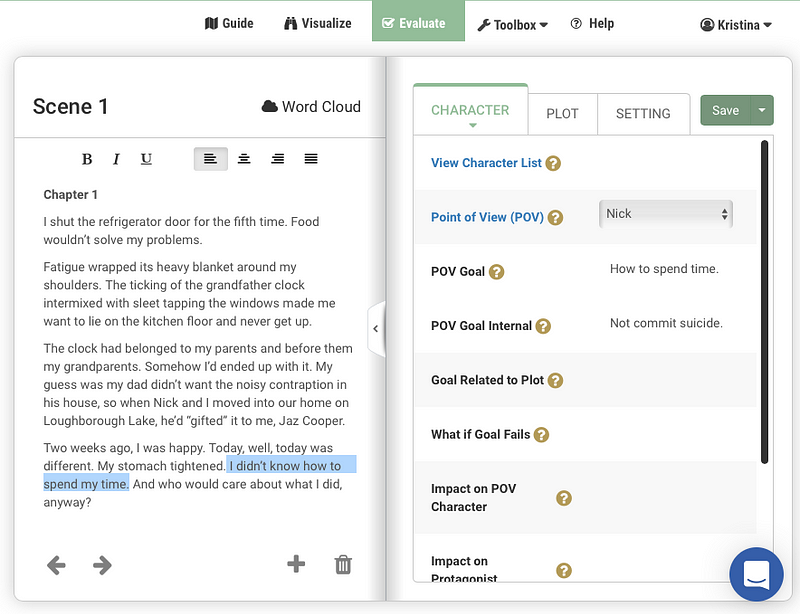Character goals are what a character wants. She should want it so badly that your readers feel her need in their guts.
The Point of View (POV) goal is what the POV character of a scene wants.
Whether you write from a single POV for the entire novel or from multiple points of view, it’s important to know what the POV character is trying to achieve in each scene.
Internal and External Goals
An external goal is the goal a character shows the world.
In a fantasy novel, that might be to find a magic object. The reader and other characters in the novel are aware of the goal. The antagonist(s) will try to make the character fail.
An internal goal is a character goal that the other characters in the scene are not aware of.
For example, a character may have a goal of stealing a jewel from a desk drawer. The other characters in the scene may think the character’s goal is to sit at the desk and calculate the latest revenue figures for their business.
The reader may or may not know about the internal goal, but as a writer, you must keep track of this.
To give a scene depth, have an internal and external goal for the POV character for each scene.
Failing To Reach A Goal
Once you know the POV goal for a scene, you can start thinking about all the ways the character will fail at achieving the goal, what obstacles you put in the way, and how the character will feel about failing or achieving the goal.
This will add tension and conflict to your scenes.
Scene Goal Versus Novel Goal
Your protagonist must have an overall goal for the novel, but she will also have a goal for each scene where she is the POV character.
You may find the POV goal for a scene is the same as the character’s goal for the novel, or you may find the character has a different goal for a scene. In the second case, make sure the scene goal is related to the plot.
For example, in a murder mystery, the protagonist’s goal for the novel is to solve the murder. In a specific scene, her goal may be to uncover a clue, hide something from the antagonist, or something a simple as trying to get a few hours of desperately needed sleep.
Driving the story forward
By giving your POV character a goal in every scene, you’re also giving your readers something to cheer for or cheer against. This will keep your readers engaged in your story and turning the pages.
Fictionary StoryTeller
Fictionary StoryTeller helps you keep track of internal and external goals. You can list the goals right beside a scene, or you can see the goals listed together in the Story map report.
Here is an example of my work in progress, Evolution, from within Fictionary. The protagonist, Jaz Cooper has two goals in the first scene.

She’s struggling with how to spend her time. This external goal is shown to the reader early in the scene (highlighted in blue).
Her internal goal, which the reader doesn’t know about, is her struggle against suicide. As the writer, I know this is her goal, and it influences what I write.
Learn more about writing captivating stories.
If you’d like to listen to an in-depth discussion on story editing, check out Story Edit Like A Pro.
![]()
Keep Track Of Goals On A Scene-By-Scene Basis
StoryTeller is creative editing software for fiction writers. Transform your story, not just your words. Successful stories depend on your ability to edit, improve, and revise your work. Only when you master story editing, can you master storytelling.
Why not check out Fictionary’s StoryTeller free 7-day trial and tell powerful stories?

